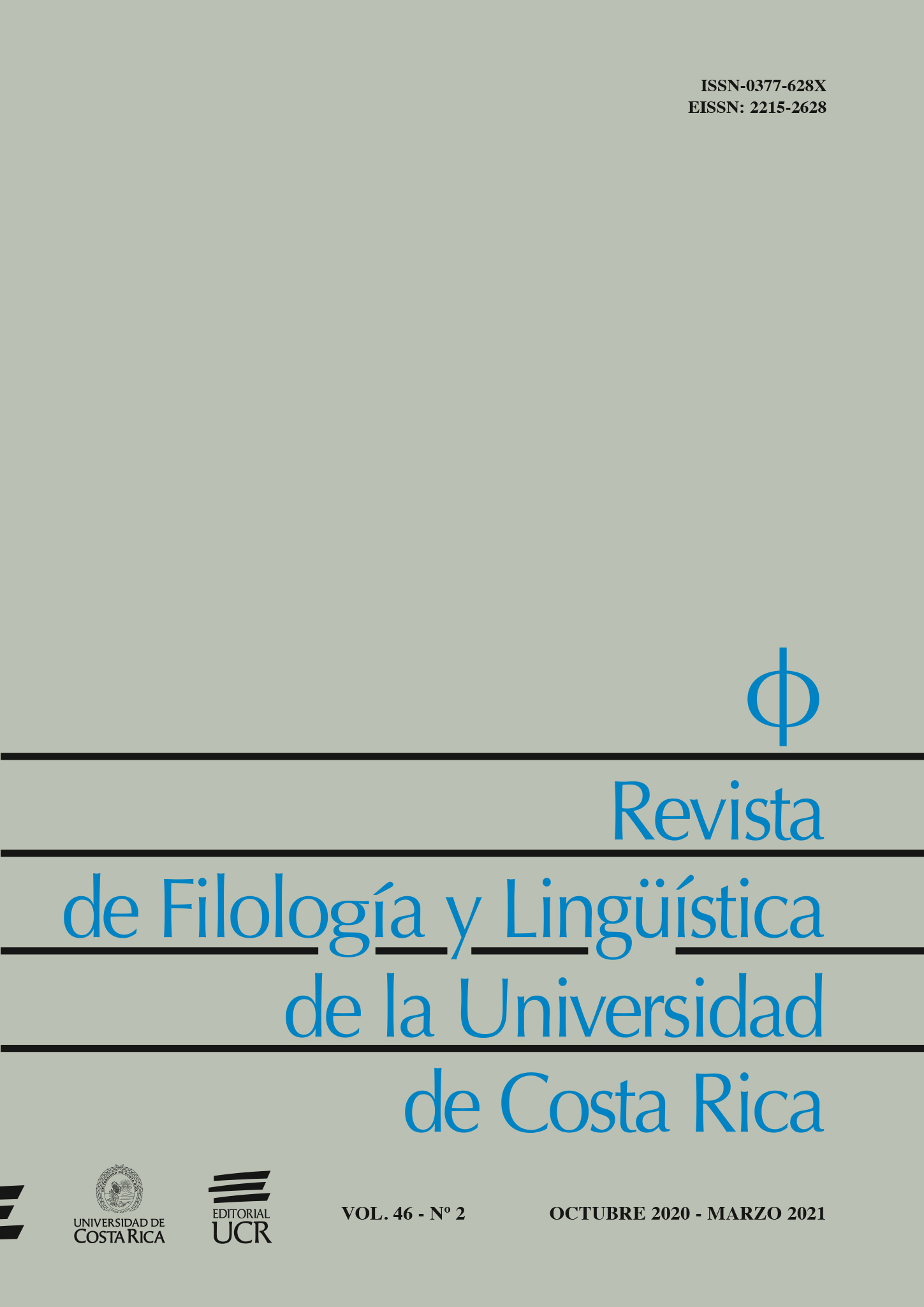Resumen
La clase universitaria conforma una situación comunicativa que se ha caracterizado, en ocasiones, con una alta formalidad. En relación con la situación que se establece en el aula, el docente escogerá un lenguaje apropiado. Con esta investigación pretendemos analizar las características de la estrategia lingüística de varios profesores de la Universidad de Málaga mediante la identificación de rasgos propios del español coloquial, con la intención de determinar si estos rasgos predominan en el lenguaje empleado por los docentes. La coloquialidad se ha conformado como un registro informal propio de la conversación, por lo que la presencia de estos rasgos coloquiales en el aula nos permitirá aproximarnos a la situación comunicativa en la que se desarrolla una clase universitaria. La muestra consta de siete profesores de los cuales se han medido de forma cualitativa 20 variables propias del español coloquial. Ordenados de menor a mayor, los sujetos de estudio han presentado 10, 13, 14, 15, 18, 18 y 19 de todos los rasgos propuestos, lo que sugiere un predominio de la coloquialidad en la clase universitaria.
Citas
Arce Castillo, Á. (1999). Intensificadores en español coloquial. Anuario de estudios filológicos, 22, 37-48.
Beinhauer, W. (1991). El español coloquial. (F. Huarte Mortón, trad.). Madrid: Gredos.
Briz Gómez, A. (1996). El español coloquial: situación y uso. Madrid: Arco/Libros.
Briz Gómez, A. (2011). El español coloquial en la conversación: esbozo de pragmagramática. Barcelona: Ariel.
Briz Gómez, A. e Hidalgo Navarro, A. (1998). Conectores pragmáticos y estructura de la conversación. En M. A. Martín Zorraquino (Ed.), Los marcadores del discurso. Teoría y Análisis (pp. 121-142). Madrid: Arco/Libros.
Camacho Adarve, M. M. (2007). Los géneros en el discurso oral español. Espéculo: Revista de Estudios Literarios, (37), 77. Recuperado de https://biblioteca.org.ar/libros/151961.pdf
Ciapuscio, G. (2005). Esquemas calificadores modales y recursos léxico-gramaticales en la conferencia de divulgación científica. Boletín de la Academia Argentina de Letras, 70(279), 373-392.
Davis, F. (1996). La comunicación no verbal. Madrid: Alianza Editorial.
Gallardo Paúls, B. (1993). Lingüística perceptiva y conversación: secuencias. Valencia: Universidad de Valencia.
Gili Gaya, S. (1981). Curso superior de sintaxis española. Barcelona: Bibliograf, Colección Vox.
Hidalgo Navarro, A. (1996/1997). Sobre los mecanismos de impersonalización en la conversación coloquial: el tú impersonal. ELUA: Estudios de lingüística Universidad de Alicante, (11), 163-176.
Hidalgo Navarro, A. (1997). La entonación coloquial: función demarcativa y unidades de habla. Valencia: Universitat de València, Departamento de Filología Española.
Hudson, R. A. (1982). La sociolingüística. Barcelona: Anagrama.
Longacre, R. (1976). An anatomy of speech notions. Lisse: The Peter de Rider Press.
Moreno Herrero, G. (1996). La importancia del concepto de enunciado en la investigación del español coloquial: a propósito de enunciados suspendidos. Pragmática y gramática del español hablado: actas del II Simposio sobre Análisis del Discurso Oral (pp. 109-126). Zaragoza: Libros Pórtico.
Narbona Jiménez, A. (1989). Sintaxis española: nuevos y viejos enfoques. Barcelona: Ariel.
Pérez Santamaría, I. (2001). El argot y las jergas. Madrid: Liceus, Servicios de Gestión y Comunicación.
Robles Garrote, P. (2013). La conferencia como género monológico: análisis macroestructural en español e italiano. Boletín de Filología, 48(1), 127-146.
Rodríguez, B. (1997). Argot y lenguaje coloquial. Pragmática y gramática del español hablado: actas del II Simposio sobre Análisis del Discurso Oral. (pp. 225-239).
Van Dijk, T. (1978). La ciencia del texto. Barcelona: Paidós.
Wardhaugh, R. y M. Fuller, J. (2014). An Introduction to Sociolinguistics. Chichester, UK: Wiley-Blackwell.

